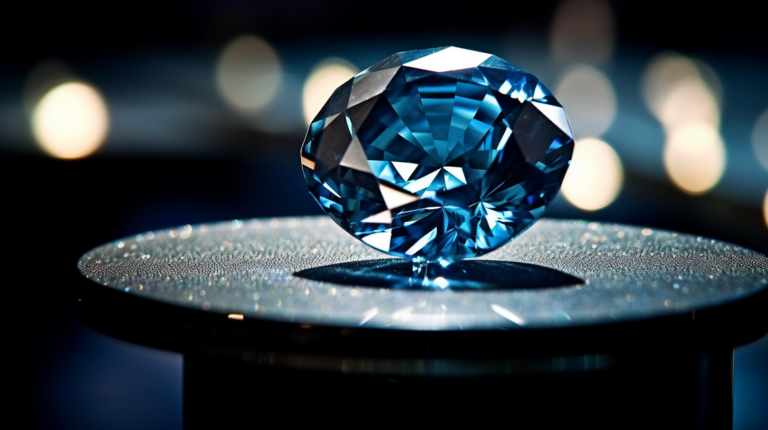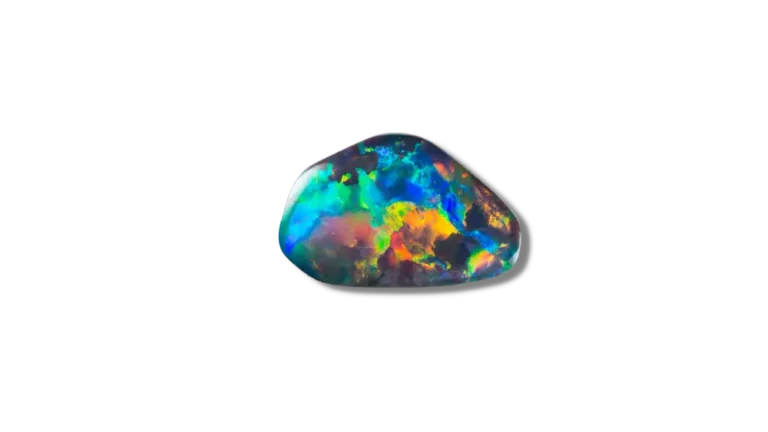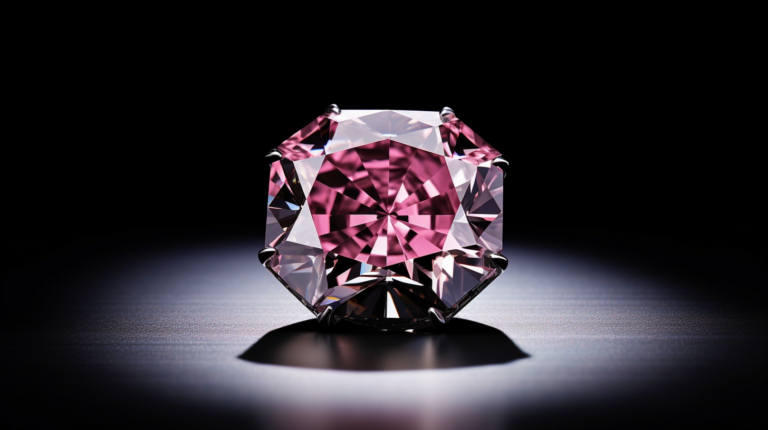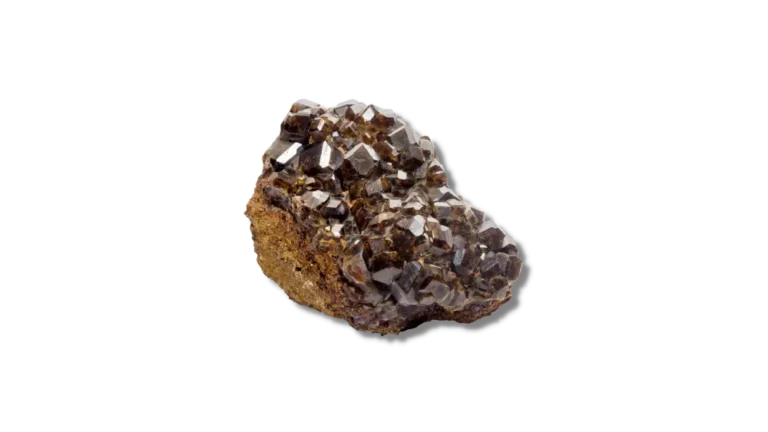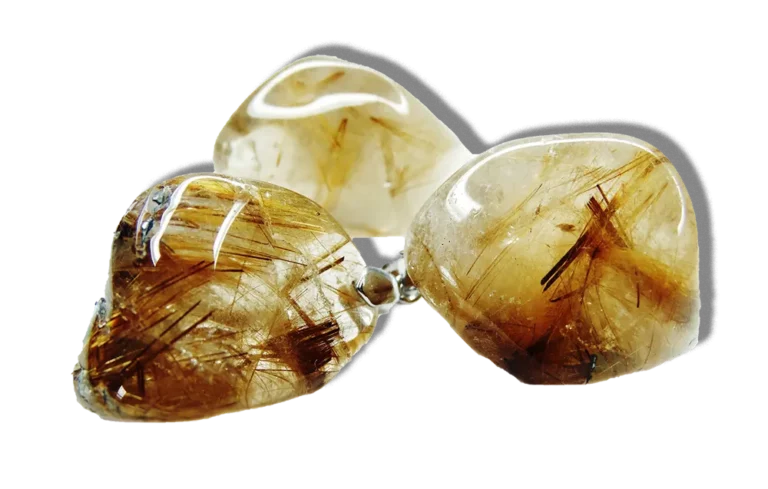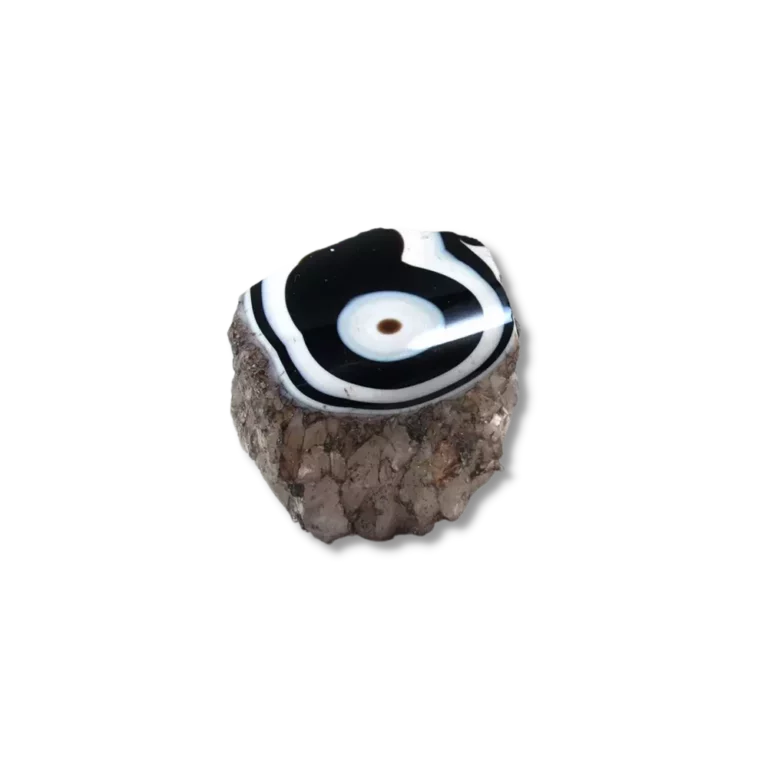Black Obsidian Crystal: Properties, Benefits & Meanings

Black Obsidian Crystal Overview
Black Obsidian crystal is a naturally occurring volcanic glass formed in the depths of the earth. It is a fascinating stone with a deep, dark color and distinctive silky flow.
Obsidian has been used by our ancestors since prehistoric times because of its sharp edges and strength, making it ideal for weapons and tools.
In addition, Obsidian is thought to have strong psychic protection qualities. It stimulates the base chakra and can protect one from negative entities or energies.
This article will talk about the properties, meanings, and uses of Black Obsidian crystal.
What is Black obsidian Crystal?
Black Obsidian crystal is a type of natural volcanic glass. Named for its dark, smoky appearance, Black Obsidian crystal is said to have protective properties. Many believe its dark color and sheen can dull sharp edges and soothe pain or anger.
The physical appearance of this Obsidian variety indicates its high content of iron oxide, which gives it its deep, rich color. This stone can be found around the world in areas with volcanic activity.
Each piece of Black Obsidian is unique as it has been cut from its source rock and polished; no two ever look exactly alike!
Other varieties of Obsidian include snowflake Obsidian, rainbow obsidian, mahogany obsidian, apache tears, and gold sheen obsidian.
Etymology
The name Obsidian is thought to have originated from the Roman term “obsianus lapis,” which means “stone of Obsius.” Obsius was a Roman explorer who reportedly discovered it in Ethiopia.
Appearance
Black Obsidian crystal is usually black or dark gray, but it can sometimes be brown or dark green. The color comes from iron impurities in the rock.
This stone forms when molten lava cools very rapidly, causing an instant formation of crystals. This process often leaves the surface of Obsidian rough and uneven, with small fissures or cracks throughout the stone.
Obsidian is often opaque (you can’t see through it), but some pieces are translucent (you can see through them).
As with all glass objects, Obsidian has a shiny surface if polished and dull if not polished. The typical appearance of polished Obsidian ranges from smooth and glossy to somewhat matte or frosty looking without being dull!
Black Obsidian crystal may resemble other black stones such as Onyx, Black Tourmaline, Hematite, and Jet.
Formation
Black Obsidian is formed when lava cools quickly. When this happens, the molten rock does not have time to form crystals, so it becomes a glassy rock that can be smooth and shiny or cracked and rough.
It may also be made in other ways: by violent eruptions or by lava flowing into cold water. In either case, the cooling process results in Black Obsidian.
The most common type of Black Obsidian is known as “obsidian hydrate”, which forms when water and other gases escape through the lava flow as it cools.
The gas bubbles create pockets inside the lava filled with a unique combination of chemicals and elements like sulfur, chlorine, and iodine—these elements give Obsidian its distinctive dark color.
Physical Properties
Obsidian is a volcanic glass that forms when lava cools and hardens rapidly from the molten state. It has an extremely high surface tension (the force required to separate it into two or more pieces), making it very brittle. Obsidian can be shattered with a hammer blow!
It is not made of glass; instead, it is called “volcanic glass” because its composition is mostly silicon dioxide (SiO2), with trace amounts of other elements such as aluminum and iron.
This means that Obsidian contains far less oxygen than ordinary glasses do. In addition, the obsidian edges are often razor-sharp (this is where its nickname “nature’s glass” comes from).
Obsidian is usually opaque and shiny with no distinctive cleavage (it can’t be split into thin layers).
| Mineral Group | Volcanic, amorphous, siliceous glass |
| Formula | SiO 2 |
| Color | Pure Black |
| Hardness (Mohs scale) | 5-5.5 |
| Refractive Index | 1.45 – 1.55 |
| Fracture | Conchoidal |
| Luster | Vitreous |
| Specific Gravity | 2.4 |
| Transparency | Translucent to opaque. |
Location
Black Obsidian crystals are found all around the world. Most Obsidian is found in volcanic regions or places where volcanic activity has occurred.
Significant deposits of Obsidian are found in:

History of Black Obsidian
Tools
Black Obsidian crystals have been used for thousands of years. They were first used by Native Americans in North America as far back as 5,000 years ago. They used it to make tools and weapons because it was very sharp.
It fractures easily into many small pieces when struck with another hard object, making it excellent for carving arrowheads and spear points.
Healing and Protection
Native Americans also recognized Obsidian’s healing properties: they treated wounds with it and drank water boiled in Black obsidian pots to treat stomach problems.
Some Native Americans still use this Obsidian for these purposes today! They also believed wearing this stone would protect them from danger and evil spirits.
The Egyptians and Mesopotamians used Black Obsidian as a tool, but they also used it to symbolize their power. The Romans had a similar belief about the healing properties of Black Obsidian: they thought it could absorb evil spirits.
Black Obsidian vs. Black Tourmaline
Black tourmaline is a member of the quartz family, whereas Black Obsidian is a variety of volcanic glass. Both are found worldwide and have been used for thousands of years as tools and adornments.
Black Obsidian stone is non-crystalline, meaning it has no actual structure and is just a solid mass. Instead, it’s a volcanic glass, which means it was formed when hot lava cooled and hardened quickly.
Black tourmaline has prismatic crystals—i.e., it’s made of layers of crystal stacked on each other like bricks. This gives Black Tourmaline a more structured appearance than Black Obsidian, which is just one solid piece of rock.
Black tourmaline is rarer and more valuable than Obsidian. Its dark black color is striking but also has a beautiful, deep-red shine.
Black Obsidian is usually lighter than Black Tourmaline. It’s also softer than black tourmaline at 5.5 on the Mohs hardness scale (whereas black tourmaline rates a 7).
Black tourmaline is a brilliant stone; sparkles are visible beneath the polished surface. Black Obsidian crystal, on the other hand, resembles a frozen liquid.
Black Tourmaline tends to be lighter in color than Obsidian, which has a darker hue. This can make it easier to tell them apart visually if you have both in your collection or wear them together as jewelry pieces.
Another difference is that Black Obsidian tends to be more porous than Black Tourmaline, which absorbs more moisture from your skin (which means you’ll need to cleanse it more often).
Black Obsidian vs. Onyx
Black Obsidian and Onyx are both shiny black stones that can be easily mistaken for one another. Both stones are very similar in appearance, but they have some distinct differences.
Black Obsidian crystals and Onyx both have a smooth texture and a glossy finish.
Obsidian can be either opaque or translucent, whereas Onyx is nearly always opaque.
Onyx is a variety of chalcedony quartz that contains bands of white and dark layers. Onyx is a mineral with a hexagonal crystal system.
Black Obsidian crystal is a type of volcanic glass that has been hardened by rapid cooling after being ejected from a volcano. While both contain bands of color, the banding in Obsidian does not create an optical illusion as it does in Onyx.
Black Obsidian is more fragile than Onyx because it has a Mohs hardness of 5.5-6 compared to Onyx’s 6-6.5. This means that Obsidian will scratch easier than Onyx, which is more durable and less likely to chip or break when dropped or banged against another object.
Unfortunately, it also means that Black Obsidian is less valuable than Onyx—but not by much! Onyx is also heavier than Obsidian.
Black Obsidian vs. Jet
The shiny black color is the most common characteristic of Jet and Black Obsidian, but a few key differences set them apart.
Both of these stones are opaque and black, but that’s where the similarities end. Black Obsidian is a volcanic glass that was formed by a volcanic eruption. It has a Mohs hardness of 5.5-6 and is relatively soft for a stone. Jet is a type of lignite, a fossilized wood, with a Mohs hardness of 2.5-4!
Jet is formed from wood that has been fossilized over time; it’s almost entirely made from carbon and very soft. On the other hand, Black Obsidian crystal is made from volcanic glass—it’s much harder than Jet. It also doesn’t contain any organic material in its composition (unlike Jet), so it won’t degrade over time as Jet can.
Jet is much lighter than Black Obsidian and is usually found in small flat pieces rather than round stones.
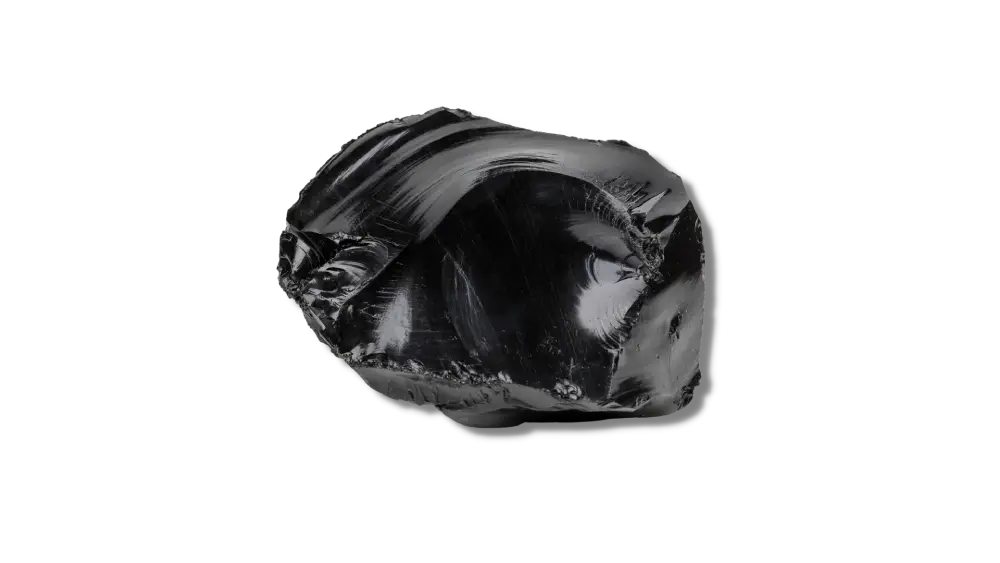
Price & Value
Black Obsidian is a relatively inexpensive crystal due to its abundance.
Texture: Obsidian crystals with unique textures, such as snowflakes and mahogany, are more expensive than Black crystals.
Quality: A quality cut and polished crystal tend to be pricier than a rough and uncut one.
Color: The color of Black Obsidian crystal varies greatly depending on its origin; it can be almost jet-black, light gray, or brown. The darker the color, the higher the stone’s quality will be.
On average, this stone costs between $15 and $50 per carat, depending on its size, shape, and quality.
How To Tell If It Is Real?
Several tell-tale signs help determine whether or not your stone is authentic.
Texture: First off, look for a smooth and shiny surface. The surface should be relatively flat and reflective.
Imperfections: Does it have bubbles and cracks? Natural Black Obsidian crystal will have cracks and bubbles from where it formed before cooling down enough to make a crystal structure. It might be fake if there aren’t any cracks or bubbles on your stone!
Hardness: Obsidian has a hardness of 5-5.5 on the Mohs scale. Obsidian can easily be scratched by glass but not by softer materials such as talc and basalt.

Chakra Connection
The chakra that Black Obsidian connects to is the root chakra (Muladhara). This chakra is located at the base of your spine, connecting with your earth element. It’s associated with security and safety in all areas of life and physical needs, such as food and shelter.
Many believe that Black Obsidian is a highly protective stone, which can not only shield you from negativity but also absorb it, keeping your energy and aura clear.
It is also thought to be a grounding stone that helps remove negativity and add clarity. It is said that this stone aids in the release of old patterns and habits that no longer serve you. It is also said to help bring your awareness back to the present moment, allowing you to see situations.
Many consider Black Obsidian to be a stone of protection. It is believed to protect from negativity and blocks psychic attacks. It is also a powerful grounding stone, allowing you to stay in the present moment and not be affected by outside influences.
Meaning And Uses
- Obsidian stone has been used for weapons, cutting tools, and ornaments like beads and mirrors since ancient times.
- Today, its applications include jewelry making, sculpture, and art glassmaking; it’s also an essential tool for artists who work with glassblowing methods that require a material that can withstand intense heat (like borosilicate).
- This stone may also be used in meditation and feng shui.
- In addition to its beauty and strength, Black Obsidian crystal has been used in healing rituals throughout history. Some people believe wearing Black obsidian bracelets can help clear negative energy from the body, while others think it can protect you from bad luck.
- Since prehistory, Obsidian has been used for tools and weapons due to its sharp edges. The Aztecs were primarily known for the obsidian knives they used for human sacrifice.
- It is still used in surgical scalpels, mirrors, jewelry (such as earrings, necklaces, bracelets, etc.), and ornaments.
- Black Obsidian crystal can be polished into beads or made into carvings of people or animals (also called “picture stones”).
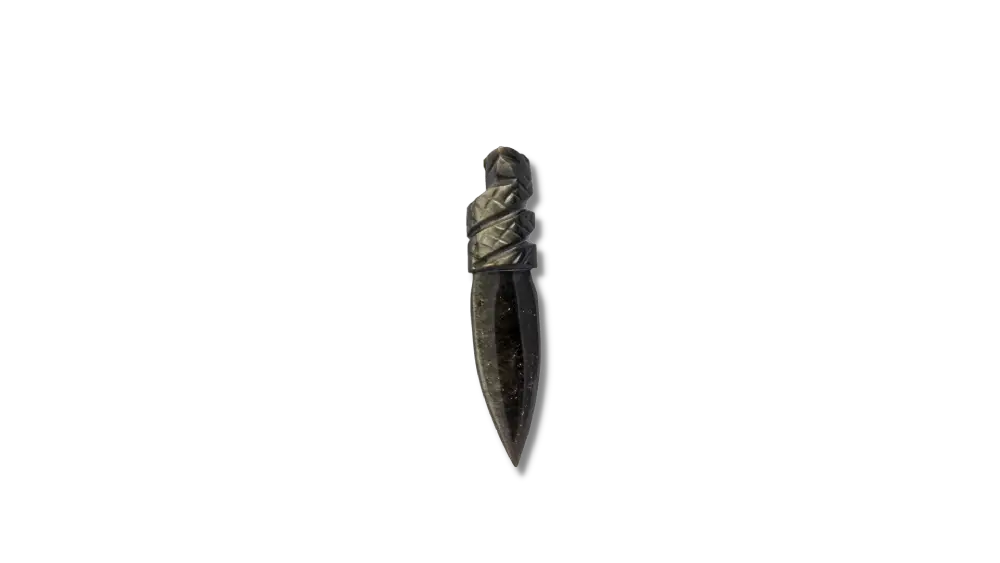
How To Take Care Of Black Obsidian Jewelry?
Black Obsidian is a beautiful stone that can be damaged with the wrong cleaning methods. Here are some tips for cleaning your black Obsidian:
- The best way is to clean it gently with a soft cloth, like a microfiber cloth or a cotton cloth that has been dampened with water.
- Do not use abrasive cleaners, which may scratch the stone’s surface.
- If you have water spots on your black Obsidian, use a soft toothbrush and warm water to scrub them until they come off gently.
- Burn white sage or other cleansing materials to remove any leftover negative energy
- Recharge your stone by (bury in the ground, leave overnight during a full moon, pour salty water over it for a few minutes)
FAQs
What gemstones go well with Black Obsidian?
Black Obsidian is an excellent stone to use in combination with other stones, and it pairs well with many different gems. This includes amethysts, aquamarine, Blue Lace Agate, Carnelian,
Citrine, etc.
Is Black Obsidian a birthstone?
Black Obsidian is not a birthstone.
However, Black Obsidian is the official state mineral of California, and Native American tribes have used it for centuries as a tool for spiritual communication and protection.
Is Black Obsidian heat treated?
Yes, Black Obsidian is heat treated.
Is Black Obsidian a Gemstone?
Technically, Black Obsidian is not a gemstone. It is natural volcanic glass, and while it may occasionally be used as a gemstone, it is not.
The term “gemstone” only refers to certain minerals used in jewelry. These include gems such as diamonds, rubies, sapphires, emeralds, etc. However, many other types of minerals are also used to make jewelry. Some examples include opals, turquoise, pearls, and garnets.
If you’re looking for an opaque black gemstone with a glossy surface, you might be interested in black Onyx or Black Tourmaline instead of black Obsidian.


